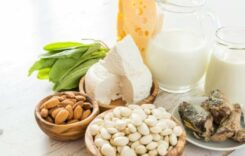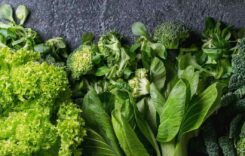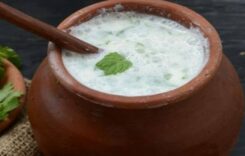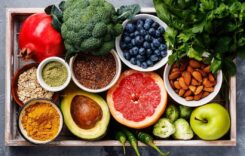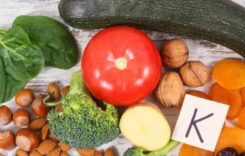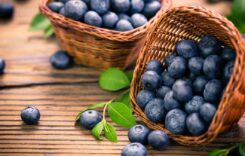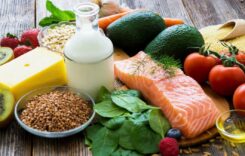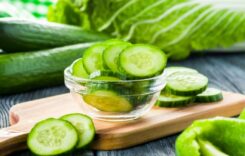Kefir and kombucha are both aged drinks with a few promoted health advantages.
While the two beverages are in the aged food class, they have a few contrasts as far as creation, nourishment, flavor, and surface.
This article surveys the contrasts among kefir and kombucha to assist you with figuring out which one might be a more advantageous decision for you.
How they’re made
Both kefir and kombucha require a starter material to go through maturation, a cycle during which microbes, yeasts, or different microorganisms separate glucose atoms, or sugar.
Notwithstanding, one significant distinction is that kefir is customarily milk-based while kombucha is green-or dark tea-based.
Kefir
Kefir grains, which in fact aren’t grains, are the essential fixing expected to make kefir. They contain a blend of yeast and microorganisms that is bound along with milk proteins and complex sugars called polysaccharides.
These grains are added to milk and left to sit for 18–24 hours to mature. When maturation is finished, the kefir grains are taken out from the fluid and can be reused to make another group. The extra fluid is the kefir.
Note that there’s additionally water kefir, which is made utilizing kefir grains with either coconut water or plain water and included sugar instead of milk. Water kefir isn’t as well known or broadly accessible as customary milk-based kefir.
Kombucha
Kombucha is produced using tea, microbes, and sugar. It’s made by blending a cooperative culture of microscopic organisms and yeast (SCOBY) with green or dark tea. This blend sits for a time of 10–14 days, all through which sugar is frequently added to give it a better flavor.
While the kombucha matures, another SCOBY structures at the head of the fluid. This is foul and thick and can be taken out, leaving the fermented tea fluid. The SCOBY you eliminate can be utilized to make another group of fermented tea.
While less mainstream industrially, a few people like to consolidate kombucha and kefir into one drink at home. This is ordinarily done by blending completed kombucha and water kefir, with both the SCOBY and the kefir grains eliminated.
Taste, surface, and flavors
Customary kefir is milk-based and has a smooth consistency. Numerous individuals consider kefir to be a drinkable yogurt. It has a sharp taste, and its level of pleasantness relies upon whether sugar is included. Kefir arrives in various flavors, which are basically natural product based, vanilla, or plain.
In correlation, kombucha is made basically with dark or green tea, giving it a more slender consistency. Numerous individuals know kombucha by its trademark, vile live culture that ordinarily sinks to the base of the container.
From the outset smell, kombucha radiates a vinegar-rich fragrance. It has a severe taste and is typically carbonated and bubbly, attributes that originate from the carbon dioxide atoms that outcome from the acidic corrosive and different gases delivered during the maturation cycle.
Kombucha arrives in a wide scope of flavors, including natural product, mint, and various flavors, for example, turmeric and ginger, to give some examples.
Nutrients
The aging cycles used to make kefir and kombucha imply that the two drinks are brimming with probiotics, which are acceptable microorganisms found in nourishments and your stomach related framework. They advance great gut wellbeing, just as great in general wellbeing.
In any case, kefir and kombucha contain some marginally various sorts and measures of good microorganisms. Both contain lactic corrosive microscopic organisms, while kombucha additionally contains acidic corrosive.
The supplement arrangement of these refreshments can shift essentially relying upon the fixings used to make them, for example, the sort of milk utilized in kefir and measure of included sugar in kombucha.
All things considered, to give you a thought of their healthy benefits, here’s the means by which 1 cup (240 mL) of kefir made with low fat dairy milk contrasts and a similar serving of kombucha:
| Kefir | Kombucha | |
|---|---|---|
| Calories | 161 | 50 |
| Protein | 11 grams | 0 grams |
| Total fat | 2 grams | 0 grams |
| Total carbs | 24 grams | 12 grams |
| Fiber | 3 grams | 0 grams |
| Total sugar | 20 grams | 11 grams |
One cup (240 mL) of kefir made with low fat dairy milk additionally gives 30% of the Daily Value (DV) for calcium, 5% of the DV for sodium, just as 10% and 25% of the DV for nutrients An and D, individually.
While the micronutrient substance of kombucha is hard to track down on the sustenance realities mark, more seasoned examinations have discovered that it contains some B nutrients, nutrients C and A, zinc, copper, iron, and manganese.
Once more, the sustenance sythesis of kefir and kombucha can change, so the most ideal approach to look at the wholesome contributions of these beverages is to analyze their supplement boards.
Advantages
The fundamental advantage of drinking kefir and kombucha is that they’re a wellspring of probiotics, which are acceptable microbes that help advance a solid bacterial parity in your stomach related plot.
Kefir
Some creature contemplates have demonstrated that drinking kefir may diminish aggravation, advance mending impacts, help lower elevated cholesterol, and tweak the insusceptible framework.
Furthermore, other creature and more established test-tube considers have discovered that kefir has possible antimicrobial, mitigating, cell reinforcement, and anticancer properties.
Kefir has even been utilized to treat incessant clogging, just as peptic ulcers in the stomach and digestion tracts in Russia.
Kombucha
Kombucha contains probiotics as well as offers the advantages of the tea used to make it. For example, green and dark teas are high in strong cancer prevention agents, which are intensifies that battle free extreme harm that can prompt constant malady.
Moreover, kombucha made with green and dark tea may have anticancer impacts, advance fat misfortune, and improve glucose control, however more examination is required.
Mixes in kombucha, for example, acidic corrosive and likely others, seem to have antimicrobial movement, which may help slaughter possibly destructive living beings in the body.
Besides, kombucha may protectively affect your liver. Some creature contemplates have discovered that fermented tea can lessen liver harmfulness brought about by poisonous synthetics, at times by up to 70%.
Drawbacks
While kefir and kombucha offer various gut-related medical advantages, they may have drawbacks to consider.
Kefir
Kefir is commonly produced using a lactose-containing milk, which implies it’s unacceptable for individuals with either a milk protein hypersensitivity or lactose bigotry.
All things considered, some veggie lover choices do exist. Some have been produced using nondairy milk like cashew milk. Water kefir is additionally a choice, as it’s made utilizing coconut water or plain water with included sugar.
Kefir can likewise contain a high measure of sugar, contingent upon the sort of milk utilized and whether included sugar or certain flavorings were utilized. Sugar-rich refreshments may likewise expand your danger of corpulence, coronary illness, greasy liver sickness, and type 2 diabetes.
A few people may likewise encounter changes in inside propensities when initially devouring kefir, for example, clogging or stomach torment.
The individuals who are immunocompromised may need to dodge food with societies or probiotics. If it’s not too much trouble talk about this with your PCP.
A little report in sound grown-ups found that while kefir has a low to direct glycemic list, implying that it doesn’t spike your glucose without a doubt, it has a high insulinemic record, which means it might build blood insulin levels more than different nourishments.
This is dangerous on the grounds that hyperinsulinemia, or high insulin levels in the blood, has been connected to a higher danger of heftiness, coronary illness, and certain malignancies.
Besides, kefir didn’t keep the examination members substantially more full than a cut of refined white bread.
Kombucha
The foam of kombucha, which is because of the carbon dioxide particles made during aging, may cause swelling in case you’re not accustomed to it.
Kombucha similarly contains caffeine from the tea, which could add to rest interruptions. Individuals with a caffeine affectability may likewise respond to it in different manners, conceivably feeling nervous or on edge.
Furthermore, kombucha can contain a considerable measure of included sugar, contingent upon what amount is utilized to make it. Inordinate sugar admission can bring water into your digestion tracts, conceivably causing looseness of the bowels.
Moreover, kombucha contains mixes called FODMAPs (fermentable oligo-, di-, mono-saccharides, and polyols), which are explicit sorts of starches that can cause a resentful stomach in certain individuals, particularly those with bad tempered entrail disorder (IBS).
Kombucha additionally contains hints of liquor because of the maturation it goes through, and a few people might need to dodge it therefore. While the sum is low in business assortments — under 0.5% — it very well may be as high as 3% in home-prepared clumps.
Besides, specialists suggest that pregnant and breastfeeding ladies keep away from liquor. Liquor can move into bosom milk and hence newborn children on the off chance that they’re breast fed inside 2 hours of the mother devouring it, and babies utilize it significantly more gradually than grown-ups.
Pregnant and breastfeeding ladies may likewise need to maintain a strategic distance from fermented tea, as it’s an unpasteurized item. This puts it at a higher danger of containing conceivably hurtful microscopic organisms like Listeria monocytogenes, which can cause unsuccessful labor.
In conclusion, pregnant and breastfeeding ladies might need to consider kombucha’s caffeine content. While moderate caffeine admission is commonly protected during pregnancy, a limited quantity of caffeine can move through bosom milk and cause children to get particular.

